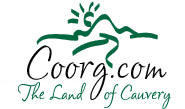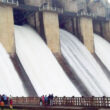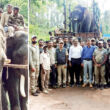Inputs courtesy: Boverianda Chinnappa and Nanjamma, researcher-writers
P T Bopanna, author and journalist
and Mohan Devaiah
Ain-manés are the ancestral homes of the native communities in Kodagu, and have an important role in their socio-cultural traditions. Each ainmané belongs to an okka (patrilineal clan) that is identified by its mané péda (name of the okka).
The traditional ainmanés of Kodagu have a unique architectural style. Those that are still standing today generally date from about 150 to 250 years ago, and have evolved from the simple ‘balyamanés’ – the ‘big’ or original homes – of earlier times.
Currently there are about 1720 okkas in Kodagu (including about 1040 Kodava, 320 Gouda and 360 okkas of other communities). Nearly 60% of them no longer have traditional ainmanés.

The much-awaited book on ‘Ainmanes of Kodagu’, authored by Boverianda Chinnappa and Nanjamma Chinnappa, researcher couple, has hit the stands. The authors wrote the book after extensive field-work in the Kodagu district (Coorg) of Karnataka, to record for posterity the way of life that the ainmanes symbolise.
The book is certainly unique in that it traces the origins and antiquity of the ancestral homes of all the native communities in Kodagu. It also describes the social and cultural significance of these ancestral homes, which are important elements of the rich heritage of the native communities of this area.”
The much-awaited book on ‘Ainmanes of Kodagu’, authored by Boverianda Chinnappa and Nanjamma Chinnappa, researcher couple, has hit the stands. The authors wrote the book after extensive field-work in the Kodagu district (Coorg) of Karnataka, to record for posterity the way of life that the ainmanes symbolise.
The book is certainly unique in that it traces the origins and antiquity of the ancestral homes of all the native communities in Kodagu. It also describes the social and cultural significance of these ancestral homes, which are important elements of the rich heritage of the native communities of this area.”
A result of years of research
The focus of the book is on the traditional ainmanes of Kodagu that are functional. A ‘traditional’ ainmane has a verandah in front with carved square wooden pillars tapering upwards and wooden seats between the pillars, ornately carved windows and door frames, and specific areas within the ainmane for the performance of rituals. A ‘functional’ ainmane is where all the members of the okka gather to celebrate important ceremonies.
The book describes the ainmanes (ancestral homes) of the native communities in Kodagu (Coorg) and their socio-cultural significance. Ainmanes are architectural symbols and expressions of the heritage and culture of the people living in this distinctive district of Karnataka.
They bear testimony to the strength and vitality of the okkas (patrilineal clans) of Kodagu and their culture. These ainmanes and the traditions associated with them continue to play a significant role in the lives of the people of Kodagu even to this day.
According to the authors, the traditional ainmanes that are still standing today account for only about 40% of the ainmanes that were built in Kodagu. Many of them are currently in a state of disrepair or are in a dilapidated condition; many have been altered and modernized as simple houses.
The Chinnappas expressed their apprehension that if this trend continued, these heritage buildings and the unique traditions, customs, festivals and rituals that were associated with them would probably vanish in the not-too-distant future. “If they vanish, so will the heritage of a people, their way of life and their collective memories,” they added.
The authors said their aim was to raise awareness of the cultural significance of the ainmanes of Kodagu and of their current condition, and hopefully encourage efforts to maintain and preserve these heritage buildings for generations to come.
The cover illustration for the book was painted by well-known cartoonist, Nadikerianda (N S) Ponnappa. The book has been published by Niyogi Books, Delhi.
Launch in Madikeri
The book will be launched at a formal function to be held in the Bharatiya Vidya Bhavan premises in Madikeri at 10-30 am on Thursday, August 28, 2014.
About the authors:
‘Pattole Palame” (or ‘Silken Lore’), by Nadikerianda Chinnappa, is regarded as one of the earliest extensive collections of folklore from any Indian community.
Pattole Palame was written in Kodava language using the Kannada script originally. It has been translated into English by statistician-writer Boverianda Nanjamma and engineer-writer Chinnappa, grandchildren of Nadikerianda Chinnappa, and has been published by Rupa & Co., New Delhi.
The translators’ introduction explains: “Since the Kodava language does not have a script, he used the Kannada script that has been in vogue since the 17th century, when the Lingayat Rajas ruled Kodagu and Kannada was their court language.”
Nadikerianda Chinnappa had begun translating the work into English in 1925 but he died in 1931, before he could complete it. Chinnappa’s daughter Gangamma married Muthanna who was an engineer and from the Boverianda clan. Chinnappa’s son and daughter-in-law were both teachers.
Their daughter Nanjamma was married to her cross-cousin, the son of Gangamma (Chinnappa’s daughter), who had also been named Chinnappa. Boverianda Chinnappa, an engineer with a degree from an Illinois university, and Nanjamma, a statistician who did her early schooling in Udupi and Mangalore, obtained her Master’s degree in statistics from Madras University in 1954 and did her post-graduate studies in the Indian Statistical Institute, Kolkata.
She was a visiting fellow at Cambridge University in 1974, pursued their professions at Chennai, Kolkata and Canada. She has also co-authored a book on Business Survey Methods. In 2006 she was awarded an honorary doctorate degree (D Litt.) of the Mangalore University at the hands of the then-governor and ex-officio chancellor T N Chaturvedi.
The book on ainmanes is another major work of the researcher couple. Speaking exclusively, the authors said that the book gives an overview of the ainmanes of Kodòagu, their history, evolution, and current status. The socio-cultural significance of the ainmane, the traditions associated with it and the ceremonies and festivals held in it are described.
They further said that the appendices give background information that sets the ainmane in its geographical, historical and social context Sketch maps in the book show the location of each ainmane visited, with accompanying indexes that list the ‘mane pedas’ (clan names) of the ainmanes in the maps. Summary tables give some statistics on the ainmanes of Kodagu.








Superb. Where can I buy a copy